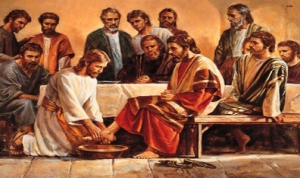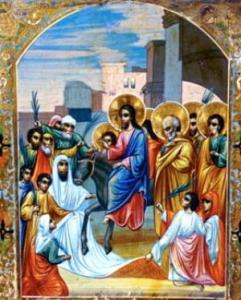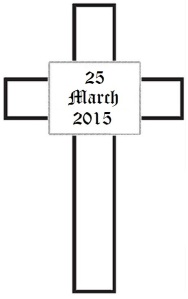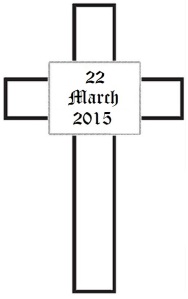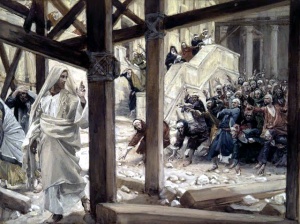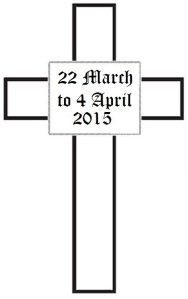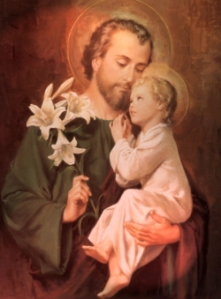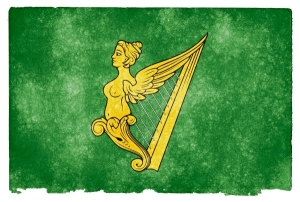INTRODUCTION
As discussed in the previous blog posts on this topic, I decided to write an article on when Jesus died so I can shorten my other blog posts on Christian traditions by simply referring back to the article every time the topic comes up. However, there was so much information to go over that I was forced to divide it into several blog posts.
When considering the time of day, day of the week, year, and month and day of Jesus’ death, we find that these interplay deeply with each other and affect how we determine each. Previous blog posts addressed:
To determine the year of Jesus’ death, we have to consider the interplay of the various possible dates for the years of His birth, His ministry’s beginning, other important events, and His death. The determination of the year in which Jesus died is too complicated to cover one blog post, so it will be divided into two “chapters.” The first chapter, offered in this post, will address the year of Jesus’ birth.
IV. YEAR OF JESUS’ DEATH
To determine the year of Jesus’ death, we have to consider the interplay of the various possible dates for the years of His birth, His ministry’s beginning, other important events, and His death.
It should be noted that His birth was traditionally dated at 1 A.D. by Dionysius Exiguus in the 6th century (there is no 0 A.D. or 0 B.C.), but that he set the date incorrectly. Specifically, he dated Jesus’ birth after the death of Herod the Great. Even the latest dates given for Herod’s death do not come in A.D., so Jesus had to have been born in B.C. In other words, if you thought Jesus was born in 1 A.D. and you’re basing your calculations of His birth and death on that concept, you should abandon that idea now.
Chapter 1. Year of Jesus’ Birth.
In Fact 1, we learned that Jesus was born after Caesar Augustus’s tax decree during or before the governorship of Cyrenius/Quirinius, and that this decree required people to return to their cities of origin.
The Greek verb translated “to be taxed” in Luke 2:1-3 is apographo and actually means to be enrolled or registered in an official listing of citizens. Essentially, it would have been a census taken for the purposes of counting the people and making them swear allegiance to the emperor and did not necessarily involve taxation to Rome. This was especially true in Judea because Judea did not pay taxes to Rome during all of Herod’s reign (they paid their taxes directly to Herod) and for roughly a decade past it until 6 or 7 A.D. Nevertheless, taxation to either Rome or to the local governorship likely occurred during a census. Oaths were normally ordered in conjunction with censuses, though Josephus records at least one instance in which 6,000 Pharisees refused to swear the oath to Augustus and Herod due to their belief in the coming Messiah, leading ultimately to Herod murdering many Pharisees, members of his own family, and others who sympathized with the Pharisees.
Among Roman citizens, the male head of a household had to travel to his home of origin for all censuses, though Joseph and Mary probably did not hold Roman citizenship, which was a rare and highly prized possession. However, in an Egyptian census document from 104 A.D., the male heads of households, citizens or not, were specifically instructed to return to their original homes for the census, so it makes sense that the same might have been true for non-citizens living in the province of Syria, such as the Jews. However, it’s especially important to note that both Joseph and Mary were descendants of King David and therefore claimants to the throne of Judea (should such a throne ever come to exist), and all claimants to a throne were required to make an oath of allegiance to the emperor. Therefore, although a wife would normally not be required to accompany her husband to a census and oath, Mary would have been thanks to her royal lineage. This was true regardless of the circumstances, but also most especially at this time in history, because the Jews had engaged in a few recent minor rebellions and loudly expressed expectation of the Messiah, Who would come from the line of David, according to prophecy. Therefore, although other Roman censuses did require non-citizen male heads of households to return to their original city—that is, the city where they were born—as descendants of King David and therefore claimants to the throne, Joseph and Mary would have been required to return to the City of David. (Bucher, N.d.; Martin, 1996)
Although Roman citizens were required to undergo Rome-sponsored census registration and oath-taking every five years, non-citizens were not, with few empire-wide exceptions and numerous local exceptions. The census mentioned in Matthew and Luke seems to have been one of those exceptions, as Luke specifically states that Augustus commanded that “all the [Roman] world be taxed [registered].” Caesar Augustus, whose real name was Gaius Octavius, reigned over the Roman Empire from 27 B.C. to 14 A.D. The Acts of Augustus lists three empire-wide censuses that Augustus ordered: in the years 28 B.C., 8 B.C., and 14 A.D. It would have taken several years for the bureaucracy of the census to reach Palestine, so the census ordered in 8 B.C. would not have been conducted in Palestine in 8 B.C. but at least a few years later. In fact, an ancient Armenian historian named Moses of Khorene reported that the Roman census agents arrived in Armenia in 3 B.C., five years after the census was ordered. It’s quite reasonable to think they arrived in Judea around the same time. (Bucher, N.d.; Martin, 1996)
The whole of the Roman Empire had to swear fealty to Augustus in 27 B.C., shortly after he became emperor, and 2 B.C. was his Silver Jubilee, so it seems quite reasonable that the Roman empire would again be made to swear fealty to him on such an auspicious occasion, which itself was accompanied by celebrations and senatorial decorations the likes of which had never been seen before or since. In 2 B.C., Augustus received the title “Father of My Country” due to actions possibly involving the census (which would therefore have to have been completed probably by late 3 B.C., which fits with the aforementioned Armenian historian’s report). Specifically, all people of the Roman Empire, citizens and non-citizens alike, had to swear fealty to Augustus, and it’s probable that this oath-taking was required during the census, especially considering that oaths to the emperor were required during all other censuses. Furthermore, as discussed above, censuses normally occurred for Roman citizens every five years, and as it happens, 8 B.C. was one of those years, which means 3 B.C. (five years later) was another. An inscription in Paphlagonia dated to 3 B.C. records that all inhabitants of Paphlagonia, both citizens and non-citizens, were required to take an oath of obedience to Augustus. Therefore, it’s quite sensible to think that the every-five-year requirement that all Roman citizens be registered in 3 B.C. was combined with the previously-announced requirement that all non-citizens be registered and make their oath. (Bucher, N.d.; Martin, 1996)
Jesus is generally accepted to have been born sometime between 7 B.C. and 1 B.C., for reasons I’ll discuss below. During this time, the provincial governor of Syria was a man named Saturninus until spring of 2 B.C., the governor for the summer of 2 B.C. is not listed (which is not surprising, since during this time, all provincial governors would have wanted to be in Rome for the celebration of Augustus’ Silver Jubilee), and Quintilius Varus took over governorship after the summer of 2 B.C. The historian Josephus mentions that there were multiple governors in Syria during the governorship of Saturninus as opposed to a single governor during each of the governorships of Titius and Quintilius Varus. (Martin, 1996)
As discussed in Fact 1, the Greek is a bit nonspecific and could mean that the census occurred during or before Quirinius was governor of Syria. Furthermore, the Greek word rendered “governor” in Luke 2:2 regarding Quirinius is hegemoneuontos, a verb which refers to someone who ruling or administrating his official duties from the highest to the lowest rank (Prof. Martin [1996] gives the example of “an exalted President” down to “the local dogcatcher for the city”). It is not a title of power or rank, such as “governor.” In fact, in the next chapter, Luke (3:1) refers to Pontius Pilate with the exact same word and grammatical structure, but Pilate was a Praefectus Judaeae, not a Legatus (governor). This makes it clear that Luke was not necessarily referring to Legatus (provincial governor) when he mentioned Quirinius, but rather to a leader or administrator of some sort. (Martin, 1996)
Quirinius’ sole (unshared), official governorship over the province of Syria started sometime in 6 or 7 A.D., long after Jesus was probably born. However, he was in Syria previously in another leadership role and Roman historical records indicate he was a “procurator” in Judea at the time of the 3 B.C. census—in fact, that he was probably responsible for administrating the census. Prof. Ernest Martin (1996) explains, “A procurator was normally a personal advocate of the emperor with special authority quite distinct from the residential governor.” (para. 8). Furthermore, according to the Cambridge Ancient History, “Each province had its equestrian procurator who in the eyes of the provincials was almost as important as the governor himself.” (Martin, 1996, para. 9). The procurators had so much power that there was usually a very icy relationship between them and the local governors. Therefore, it’s probable that Luke’s reference to Quirinius administrating his duties in Syria is more accurately a reference to him as procurator. (Bucher, N.d.; Martin, 1996)
To summarize the above, all evidence regarding Augustus’ decree for the Roman world to be registered and make an oath of fealty to him and regarding Quirinius’ administrative duties suggest that Joseph and Mary were in Bethlehem for the census in 3 B.C.
In Fact 2, we learned that Jesus was born during the reign of Herod the Great. Herod the Great was most likely king from approximately 37 B.C. to 1 B.C. (side note: he was appointed king by the Romans about three years before he began his reign over Jerusalem, and these dates are based on Josephus’s writings, which themselves contain contradictory dates). Some scholars have argued that Herod died in 8 B.C. However, as noted above, the census decree predated Jesus’ birth probably by a few years, Jesus’ birth predated Herod’s death, and the tax decree was issued in 8 B.C., so Herod certainly could not have died in 8 B.C. According to the Jewish historian Josephus, Herod died between a lunar eclipse and the Passover (which takes place in March or April every year), and so, if this is true (scholars find some reasons to doubt certain things Josephus has written, so it may be the relationship between a lunar eclipse and Herod’s death is mythical), Herod probably died in the beginning of the Roman calendar year 1 B.C., in which year the lunar eclipse was January 10 and the Passover was April 11. (Akin, 2013b; Akin, 2013c; Conte, 2003)
As demonstrated by the fact that Herod ordered the deaths of males under the age of two, Herod thought that the Christ may have been born as early as two years before this event. However, since he probably died in the beginning of a Roman calendar year, he most likely ordered the Massacre of Innocents at the end of the Roman calendar year at the latest, so toward the end of 2 B.C. (Of course, it’s possible that Herod ordered the Massacre of Innocents and then died several years later, in which case he probably ordered the Massacre of Innocents no later than the end of 3 B.C. but probably still died in 1 B.C.) Therefore, Jesus may most likely have been born either in 3-2 B.C. at the latest according to Herod’s death year. Coincidentally, the majority of ancient Christian writers supported 3-2 B.C. as Jesus’ birth year, and that dating was most accepted among the earliest Christian writers and least accepted among the latest Christian writers (see Footnote 1).
As an additional note, Luke specifies that Mary was heavily pregnant at the time that she and Joseph traveled to Bethlehem for the census, so it’s probable that she gave birth shortly after arrival in Bethlehem. I’m sure there were many people in Bethlehem at the time—in fact, probably all the living descendants of King David, which generation was approximately 28 generations after King David and so had had plenty of time to expand to a very large number—and there may have been a rather long line to get registered and take your oath. We can’t know for sure, but it may very well have taken 2-3 months of waiting for your turn. At any rate, my point is that, since Mary was heavily pregnant at the time, they probably didn’t have to spend long in Bethlehem before Jesus was born and they were probably still going through the registration process at the time of the birth.
To summarize the above, all evidence regarding Herod’s reign over Jerusalem suggest that Jesus was born in 3 B.C. or 2 B.C.
SUMMARY
To summarize what we know from just Facts 1 and 2:
- the census ordered by Augustus and during which Quirinius was in Syria was likely completed in 3 B.C.;
- Jesus was probably born while the census was ongoing;
- the date of Herod’s death is probably the spring of 1 B.C.;
- the Massacre of Innocents probably occurred no later than the winter of 2 B.C.; and
- Jesus was probably not older than 2 years at the time of the Massacre of Innocents.
In conclusion, Jesus was most likely born in 3 B.C.
The next posts will address:
- Part IV: Year of Jesus’ Death: Chapter 2: Year of Jesus’ Ministry
- Part V: Full Date of Jesus’ Death
FOOTNOTES
Footnote 1: Early Christian Writers on Jesus’ Birth Year. (Akin, 2013d)
| Person/Group |
Date |
Century of Publication |
| Cassiodorus Senator |
3 B.C. |
5th to 6th |
| St. Irenaeus of Lyon |
2-3 B.C. |
2nd |
| Tertullian of Carthage |
2-3 B.C. |
2nd to 3rd |
| Julius Africanus |
2-3 B.C. |
2nd to 3rd |
| St. Hippolytus of Rome |
2-3 B.C. |
2nd to 3rd |
| Hippolytus of Thebes |
2-3 B.C. |
7th to 8th |
| Origen of Alexandria |
2-3 B.C. |
2nd to 3rd |
| Eusebius of Caesarea |
2-3 B.C. |
3rd to 4th |
| Epiphanius of Salamis |
2-3 B.C. |
4th to 5th |
| Orosius |
2 B.C. |
4th to 5th |
| The Alogoi |
4 B.C. or 9 A.D. |
2nd to 3rd |
| Dionysius Exiguus |
1 B.C. |
6th |
| The Chronographer of the Year 354 |
1 A.D. |
4th |
As seen in the above table, there’s good reason from other ancient sources to select 2-3 B.C. as Jesus’ date of birth. Out of 13 early Christian writers, 10 (77%) dated it to 3-2 B.C., and 1 each dated it to 1 B.C., 1 A.D., and 4 B.C. or 9 A.D. (See Footnote 1.) Of those selecting 3-2 B.C., 50% published in the 2nd-3rd centuries, 30% published in the 3rd-5th centuries, and 20% published in the 5th century or later. Of those selecting another date, 33% published in the 2nd-3rd centuries, 33% in the 3rd-5th centuries, and 33% in the 5th century or later. Another way of looking at it is that 83% publishing in the 2nd-3rd centuries agreed on 2-3 B.C., 75% publishing in the 3rd-5th centuries agreed on 2-3 B.C., and 67% publishing in the 5th century or later agreed on 2-3 B.C. Therefore, among early Christian writers, there was a great consensus (77%) that Jesus was born in 2-3 B.C., and that consensus was greatest among the very earliest of writers.
REFERENCES
Akin, J. (13 April 2013b). “The 100-year old *mistake* about the Birth of Jesus.” National Catholic Register. Retrieved from <http://www.ncregister.com/blog/jimmy-akin/the-100-year-old-mistake-about-the-birth-of-jesus/>.
Akin, J. (17 April 2013c). “Jesus’ birth and when Herod the Great *really* died.” National Catholic Register. Retrieved from <http://www.ncregister.com/blog/jimmy-akin/jesus-birth-and-when-herod-the-great-really-died>.
Akin, J. (21 April 2013d). “What year was Jesus born? The answer may surprise you.” National Catholic Register. Retrieved from <http://www.ncregister.com/blog/jimmy-akin/what-year-was-jesus-born-the-answer-may-surprise-you/>.
Bucher, R.P. (N.d.). “Caesar Augustus, Quirinius, and the Census.” Our Redeemer Lutheran Church. Retrieved from <http://www.orlutheran.com/html/census.html#Anchor4>.
Conte, R.L. (2003). “The Chronology of Herod the Great’s Reign.” BibleChronology.com. Retrieved from: <http://www.biblicalchronology.com/herod.htm>.
EDITS
I will periodically edit this post to add links to the following posts in this series as they are published.
 COLOR
COLOR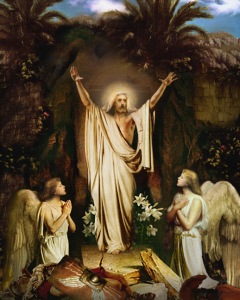 WHAT IS IT?
WHAT IS IT? CALENDAR OF EVENTS
CALENDAR OF EVENTS




